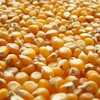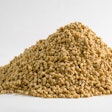With the focus on antibiotic-free diets, we tend to forget that the whole world does not revolve around this issue; there are still more countries that allow the use of sub-therapeutic use of antibiotics than not. In these places, there is a sound concern whether available additives work on top of such antibiotic use. In other words, the discussion about replacing antibiotics has created a negative feel about these replacements, which is not always correct.
With this question in mind, I have provided below a list of six additives that I know work in addition to antibiotics to promote growth in pigs and poultry. Of course, not all of them work together, or in all possible cases, but in my experience, these are the best candidates to consider when your formulations contain antibiotics.
1. Zinc oxide and copper sulphate
This is an easy proposition as both additives were discovered when antibiotics were the norm. Both additives appear to kill or restrain bacteria growth, but more likely they tend to regulate microflora composition towards a positive outcome that benefits the host animal. The exact dosage depends on overall feed formulation and local laws that might restrict their inclusion levels. Here, I should mention that my personal experiences do not include organic forms of these mineral sources, and as such I still prefer to use the traditional inorganic forms.
2. Organic acids
Organic acids are very unlikely to work on top of antibiotics if diets are formulated correctly, but they can be very useful in neutralizing the strong buffering capacity of certain ingredients (such as zinc oxide, calcium carbonate, etc.), or enhance protein digestibility in high-protein diets. They can also be very beneficial in severe cases of diarrhea when used in conjunction with strong antibiotics for therapeutic use. Of course, some organic acids, such as benzoic and propionic acid, also act as strong feed preservatives in hot and humid climates.
3. Functional fibers
Again, it is not very productive trying to promote “good” gut bacteria when antibiotics are used, but one functional role of fiber is that of absorbing excess moisture from secretory diarrhea. This improves animal appearance and prevents secondary complications through pathogenic infection. It also allows the use of higher levels of simple sugars, such as lactose and dextrose. Not all fibers absorb water with the same strength, and within those with the strongest water binding capacity there is a great disparity in cost. Thus, it pays to select carefully as this is still a new field and there is considerable “secrecy” going on.
4. Clays
There are several clay products in the market, and most of them are marketed as mycotoxin binders. But, they can serve additional roles: namely, they can absorb excess water in the gut (like fibers, with similar beneficial results — and sometimes, with much less cost), and it is believed they can absorb and neutralize specific bacterial toxins that can impair gut health. This latter role is hugely unrecognized and merits further investigation as it can offer tremendous advantages at relatively low cost. Again, not all products are the same, whereas my experiences include good results from bentonites and zeolites.
5. Immunoglobulins
This is one more functional “nutrient” that was discovered in the era of high-use of antibiotics, and it still performs. Whether immunoglobulins come from plasma, hyper-immunized eggs, or colostrum, makes little difference to the animal as long as the antibodies target specific pathogens. Picking the right source of immunoglobulins is more likely a matter of quality assurance and, above all, cost. Everybody knows I am a strong believer of the effects of animal plasma but I use egg-derived immunoglobulins for cost reasons in my own brand of piglet feeds.
6. Botanicals
We have come to know phytogenic compounds as antibiotic replacements, but we forget these ingredients possess many more traits: they can improve feed taste, immune status and feed digestibility. As there is a plethora of such available products, it is important to pick the right combination of “botanicals” for the right reason. I am currently exploring these side-effects, and as such I have no firm personal experiences to share.
Additives as solutions to problems
Following over 20 years of marketing, I believe it is fair to conclude now that additives cannot be considered as commodities employed in a blanket-application mode, like salt or calcium carbonate. In other words, additives cannot be included in all formulas, no matter what. Instead, they should be considered as tools for the solution of specific problems. However, we must continue to explore their side roles as they can offer strong benefits when used properly and at the right time, within the correct formulation context.

















